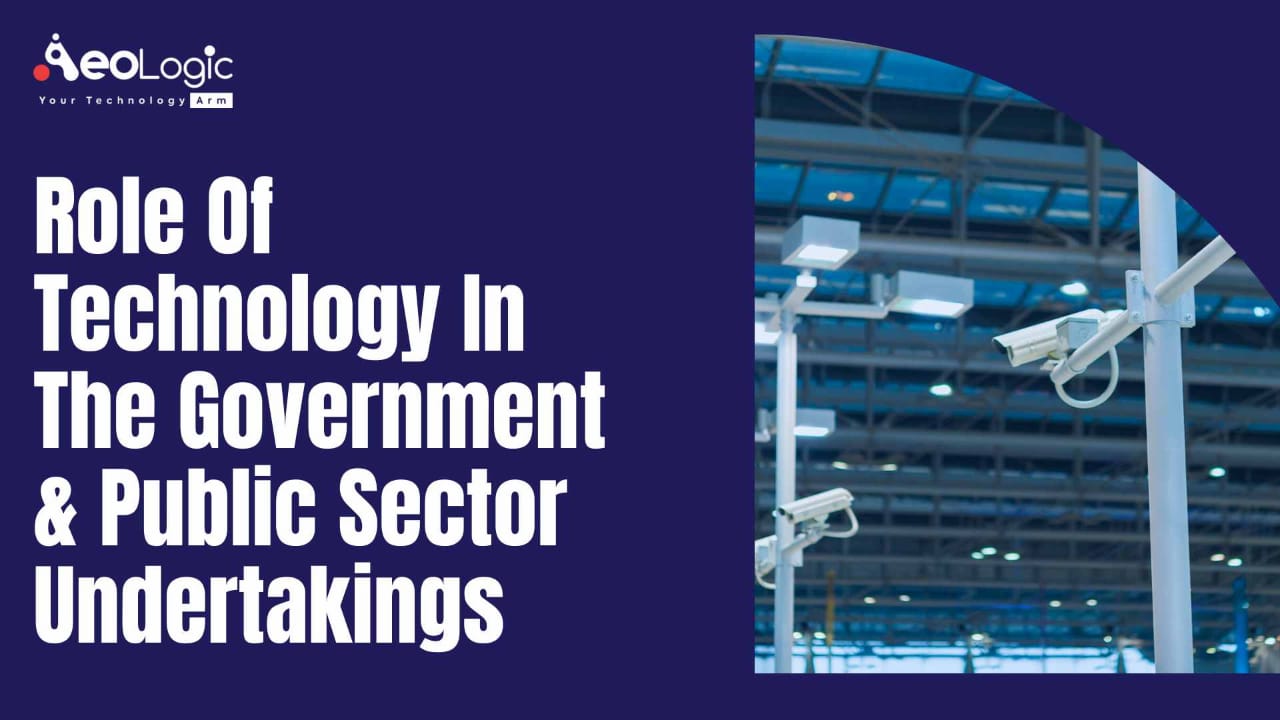Technology has become an important facilitator for businesses in today’s world. It has a highly insightful role in driving optimization and efficiency across all sectors today, including the public and private sectors. CIOs from Government & PSUs have implemented niche technologies to drive innovation and transformation within the country. Tech adoption is observed as an investment in keeping the country competitive in an ever-changing global economy.
Depending on progressive technologies such as blockchain, artificial intelligence, robotics, machine learning, and augmented reality have helped drive sustained growth within the public sector. This persistent strive through automation, and the digitalization of services is leading to significant social, economic, technological, & environmental outcomes. The role of technology in government and the public sector is to improve various processes.
Also read: How to Help Information Technology in Social Security schemes
Few technologies that have been rapidly adopted by the GOI and Public Sector industries today for facilitating the Digital Economy are as follows:
Artificial Intelligence and Analytics:
The role of technology in government and PSUs can harness citizens’ data and behavior based on interactions with digital websites and agencies. Thus, the data obtained can be analyzed with the use of AI and analytics techniques. The intelligence gathered can provide personalized public services to citizens, derive actionable insights, and assist them in predicting future trends.
Blockchain:
Enterprises and governments across the world have identified blockchain’s potential. More than forty nations are taking initiatives to implement blockchains within their economies. And are developing a robust, & holistic blockchain environment. Blockchain 3.0, the present version of the blockchain, offers interoperability, scalability, and security vis-a-vis its older versions. More than 50% of the Indian states have started blockchain projects (pilot stage) to offer better customer services.
IoT:
One of IoT’s significant government implementations is in the Smart City category. IoT solutions contain a broad deployment of IoT sensors across the city, offering real-time data about city events. Furthermore, a centralized system analyses data. Also helps in improving decision-making in cities’ governance. Some of the critical aspects of the smart city as expressed in India’s IoT policy. This includes smart parking, Intelligent Transportation systems, Smart Grids, Water & Waste Management, Smart Urban Lighting, Smart City Maintenance, and Digital Signage.
Cloud Computing and Virtualization:
The role of technology in government and the public sector can be improved with Cloud computing. Therefore, resulting in higher and improved cost efficiencies, a faster time-to-market, and enhanced scalability of applications-on-demand. Virtualization (NFV and SDN) is also serving as a significant driver of cloud deployment across all sectors. Using Cloud Computing, even small to medium public sector organizations within local communities, have driven innovation in ways that would not have been possible if they were to rely entirely on their resources.
Location Intelligence and Surveillance
Amidst the COVID-19 pandemic, both the Government and public sector organizations, are adopting surveillance technologies to track the movement of their employees. Nonetheless, Cellphones are playing a critical role in the fight against the spread of the coronavirus. The Indian Government, on April 6, 2020, launched the Aarogya Setu app for contact tracing.
State governments and PSUs are also employing geo-fencing technology to ensure quarantine for the ones suspected of infection. It helps in creating a virtual geographic boundary, alerting officials if a particular mobile device leaves a designated area.
Digital Twins: Bridging the physical and digital
Digital twins are poised to innovate and transform the way PSUs perform predictive maintenance of machinery and products within their manufacturing units. Sectors involving capital-intensive assets and processes such as utilities, energy, and manufacturing are pioneering digital twin use cases worldwide.
They can also contribute to improving supply chains, distribution, and fulfillment operations. In the private sector, the FMCG giant Unilever has launched a digital twin project that intends to create virtual models of dozens of its factories.
Also read: Cutting-edge Technologies Maximizing Benefits of Social Welfare Scheme
Conclusion:
The role of technology in government and the public sector has been a strong catalyst for India’s rapid digitization. Digital technologies can contribute considerable value to areas such as online transactions, government subsidy transfers, and procurement to augment efficiency and productivity in government and public sector units. Also, the National and state governments can drive digitization through a partnership with the private sector. Hence, placing technology at the core of their operations.
If you have an interest in emerging technologies, talk to the industry experts at Aeologic Technologies. Contact us to learn how we can accelerate your business process and digitize your workflow.
FAQs
How technology is helping the government?
Digital technologies can contribute significant value to verticals such as online transactions, government subsidy transfers, and procurement to improve efficiency and productivity in Government and public-sector units.
How technology is affecting the government?
Recent tech developments such as artificial intelligence (AI) and blockchain are increasingly being used by governments to enhance the efficiency of the services they provide. For example, blockchain technologies can permit the government to keep vital data records secured and confidential within a secure ledger.









